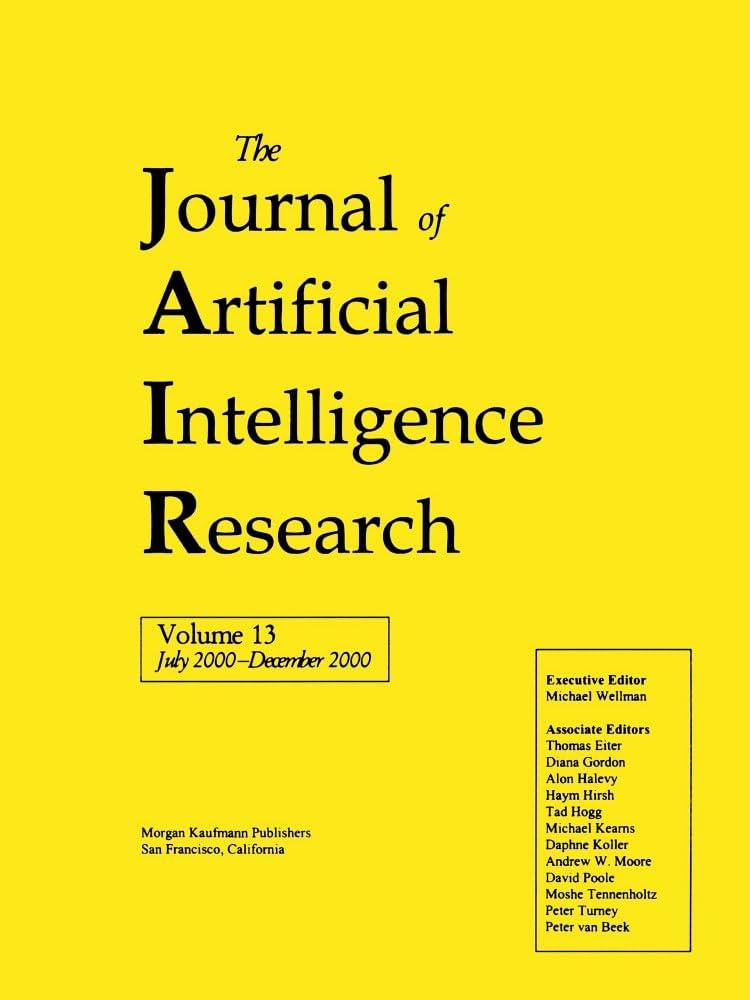Motion Planning Under Uncertainty with Complex Agents and Environments via Hybrid Search
IF 4.5
3区 计算机科学
Q2 COMPUTER SCIENCE, ARTIFICIAL INTELLIGENCE
引用次数: 2
Abstract
As autonomous systems and robots are applied to more real world situations, they must reason about uncertainty when planning actions. Mission success oftentimes cannot be guaranteed and the planner must reason about the probability of failure. Unfortunately, computing a trajectory that satisfies mission goals while constraining the probability of failure is difficult because of the need to reason about complex, multidimensional probability distributions. Recent methods have seen success using chance-constrained, model-based planning. However, the majority of these methods can only handle simple environment and agent models. We argue that there are two main drawbacks of current approaches to goal-directed motion planning under uncertainty. First, current methods suffer from an inability to deal with expressive environment models such as 3D non-convex obstacles. Second, most planners rely on considerable simplifications when computing trajectory risk including approximating the agent’s dynamics, geometry, and uncertainty. In this article, we apply hybrid search to the risk-bound, goal-directed planning problem. The hybrid search consists of a region planner and a trajectory planner. The region planner makes discrete choices by reasoning about geometric regions that the autonomous agent should visit in order to accomplish its mission. In formulating the region planner, we propose landmark regions that help produce obstacle-free paths. The region planner passes paths through the environment to a trajectory planner; the task of the trajectory planner is to optimize trajectories that respect the agent’s dynamics and the user’s desired risk of mission failure. We discuss three approaches to modeling trajectory risk: a CDF-based approach, a sampling-based collocation method, and an algorithm named Shooting Method Monte Carlo. These models allow computation of trajectory risk with more complex environments, agent dynamics, geometries, and models of uncertainty than past approaches. A variety of 2D and 3D test cases are presented including a linear case, a Dubins car model, and an underwater autonomous vehicle. The method is shown to outperform other methods in terms of speed and utility of the solution. Additionally, the models of trajectory risk are shown to better approximate risk in simulation.基于混合搜索的复杂agent和环境下不确定运动规划
随着自主系统和机器人应用于更多的现实世界情况,它们在规划行动时必须对不确定性进行推理。任务的成功往往不能保证,计划者必须考虑失败的可能性。不幸的是,由于需要对复杂的多维概率分布进行推理,在限制失败概率的同时计算满足任务目标的轨迹是困难的。最近的方法已经成功地使用了机会约束、基于模型的计划。然而,这些方法中的大多数只能处理简单的环境和代理模型。我们认为,在不确定性下,目前的目标定向运动规划方法有两个主要缺点。首先,当前的方法无法处理具有表现力的环境模型,如3D非凸障碍物。其次,大多数计划者在计算轨迹风险时依赖于相当大的简化,包括逼近agent的动力学、几何和不确定性。在本文中,我们将混合搜索应用于风险约束、目标导向的规划问题。混合搜索由区域规划器和轨迹规划器组成。区域规划器通过推理自治智能体为完成任务需要访问的几何区域来做出离散选择。在制定区域规划时,我们提出了有助于产生无障碍路径的地标区域。区域规划器通过环境将路径传递给轨迹规划器;轨迹规划器的任务是在尊重智能体动力学和用户期望的任务失败风险的情况下优化轨迹。我们讨论了三种建模轨迹风险的方法:基于cdf的方法、基于采样的配置方法和射击法蒙特卡罗算法。与过去的方法相比,这些模型允许在更复杂的环境、代理动力学、几何形状和模型不确定性下计算轨迹风险。介绍了各种2D和3D测试案例,包括线性案例,杜宾汽车模型和水下自主车辆。该方法在解决方案的速度和效用方面优于其他方法。仿真结果表明,轨迹风险模型能较好地逼近风险。
本文章由计算机程序翻译,如有差异,请以英文原文为准。
求助全文
约1分钟内获得全文
求助全文
来源期刊

Journal of Artificial Intelligence Research
工程技术-计算机:人工智能
CiteScore
9.60
自引率
4.00%
发文量
98
审稿时长
4 months
期刊介绍:
JAIR(ISSN 1076 - 9757) covers all areas of artificial intelligence (AI), publishing refereed research articles, survey articles, and technical notes. Established in 1993 as one of the first electronic scientific journals, JAIR is indexed by INSPEC, Science Citation Index, and MathSciNet. JAIR reviews papers within approximately three months of submission and publishes accepted articles on the internet immediately upon receiving the final versions. JAIR articles are published for free distribution on the internet by the AI Access Foundation, and for purchase in bound volumes by AAAI Press.
 求助内容:
求助内容: 应助结果提醒方式:
应助结果提醒方式:


